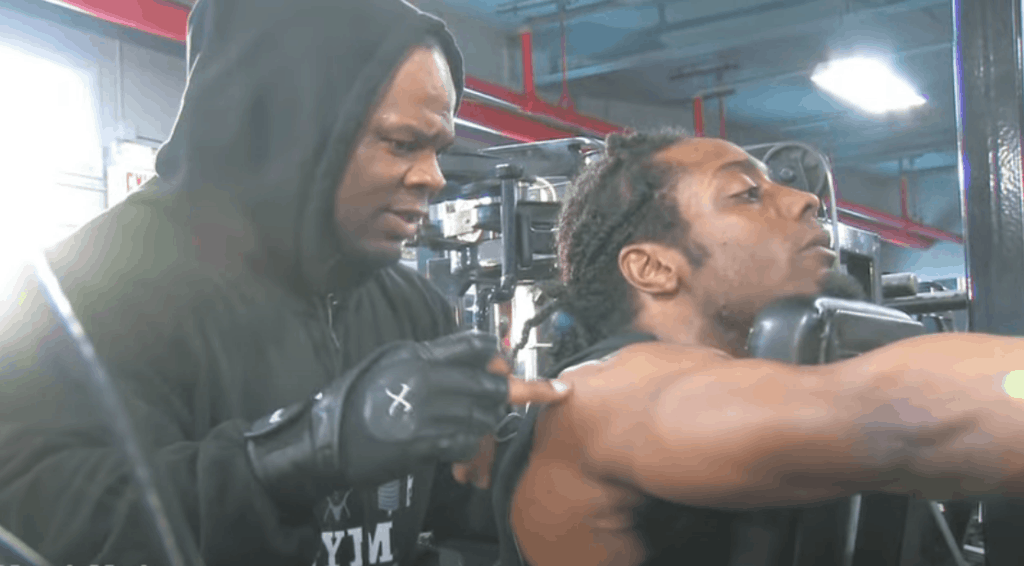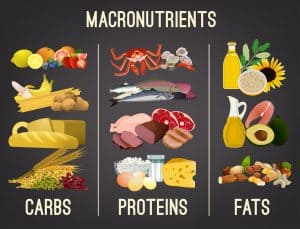One of the major differences between having great vs bad workout sessions is the “mind-muscle connection“.
You hear that term thrown around a lot in the bodybuilding and fitness community.
It is one of the most important keys that enables you to connect at a state of mind in order to feel the muscle contraction.
Without it, you could be sacrificing your muscle growth.
But how to establish this connection between your mind and muscles?
And is it developed equally at the same levels between all muscle groups?
What are the important factors that dictate how fast you can establish this connection?
In this post, I’ll give you the answer to these questions and I’ll share with you 9 tips to help you establish the mind-muscle connection.
Moreover, I’ll give you a list of actionable techniques to implement in your workout for each muscle group that will help you further develop this connection at a whole new level.
So let’s dive in.
What is the Mind-Muscle Connection?
Mind-muscle connection is the mental linkage that allows you to feel your muscle fibers contracting and stretching.
It is considered a major key in increasing the pump and the blood flow to your muscle, and therefore, your muscle gains.
Many attribute the lack of muscle pump during the workout to the lack of mind-muscle connection.
This should not worry you if you are at the very early stage of your lifting journey.
But you should be able to quickly develop this connection as you progress.
With that being said, not all muscles can connect equally with your mind. Some connect easier than others.

How fast can you establish the mind-muscle connection?
It is important to know that the mind-muscle connection does not happen at the same pace for all muscle groups.
A good rule to gauge the mind-muscle connection is this:
How sore your muscles get the day after your workout dictates how fast you develop the mind-muscle connection.
It is relatively easy to get sore in the chest, legs, and biceps.
But shoulders, back, are glute? Not so!
In fact, my shoulder didn’t get sore until after 3 years into my training, especially the rear delt. And my lats? More like 5 years!
Not because I was doing something wrong, but rather because it is very hard to mentally connect with these complex muscle groups, particularly given they’re located in the back where you don’t get to see them contracting and stretching.
Not being able to visualize the muscle contraction impedes your mental connection with your muscles.
9 Tips to Establish the Mind-Muscle Connection
If you are struggling to establish a mind-muscle connection, these tips will help you.
1
Lighten the weight.
Using too much momentum or assistance from other muscle groups shifts the tension away from the targeted muscle.
2
High Repetitions.
Pumping as much blood to the muscle and building up the lactic acid alert your brain to the pain caused by tearing up the muscle fibers in the targeted group.
The damage in the muscle fibers caused by the workout is registered by pain receptors called nociceptors. These receptors are connected to the spinal cord which passes the signal to the brain.
Once the signal arrives the sorting station in the brain passes it to the Somatosensory Cortex, which is responsible for physical sensation.
3
Focus on Stretching.
Muscle stretching through the eccentric movement is a great way to establish the mind-muscle connection. This is particularly significant for bigger muscle groups such as the lats and chest.
4
Slow contraction and iso-hold.
As opposed to focusing merely on the eccentric part of the full range of motion.
This is more important for smaller muscle groups, such as the biceps.
5
Isolation Exercises.
It is difficult to visualize and slow down the movement on compound exercises. Barbell bench press, Squat, or deadlifts are not meant to develop the mind-muscle connection, but rather build strength.
In addition, these movements have a considerable amount of momentum and assistant muscle groups involved.
Performing more isolation exercises is ideal to establish the mind-muscle connection.
6
External activation (partner touch).
If you ever watched Kai Greene or John Meadows training with a partner, they normally poke the partner’s muscle groups during the exercise.

This helps send an additional signal to alert the brain of the muscle undergoing activation and mechanical tension.
7
Pose.
Posing between the sets helps establish the mind-muscle connection. Pose and hold the position for a few seconds to build up the lactic acid.
This works great for almost all body parts except the legs.
8
Imagine and Visualize.
Look at the muscle anatomy, memorize the name of each group. Study how they contract. Then when performing the exercise imagine exactly the movement of the muscle in your mind.
Performing the exercise with lighter weights, slow contraction, and/or focusing on the eccentric movement and stretching will help you with the visualization process.
9
Don’t rush it.
As mentioned above, some muscle groups take much longer to establish a connection with the mind.
Those groups in the back of the body, like the lats, rear delt, and hamstrings are harder to visualize or directly see in the mirror.
So, your brain might take longer to be able to connect with the fibers in these muscles.
Exercises For Establishing the mind-muscle connection for each muscle group
Here are some exercise techniques that will help you establish the mind-muscle connection for each muscle group.
Mind-Muscle Connection for Back
Difficulty level: Difficult.
- Moderate weight on the lat pulldown machine, squeeze and hold for a second.
- Let a training partner poke or grab the lat when squeezing.
- Moderate to heavyweight on the lat pull down but focus on the stretch and hold at the top.
- Stretch your lats between the sets.
- Pose and flex your lats (front lat spread) in between the sets or after the workout.
Mind-Muscle Connection for Chest
Difficulty level: Easy.
- Cable crossover with slow contraction, squeeze, and hold for a second.
- Machine flyes and focusing on the eccentric/negative movement.
Mind-Muscle Connection for Shoulders
Difficulty level – Front Delt: Easy.
- Front raises with lightweight and high reps.
- Iso-hold for a second at the top of the raises.
Difficulty level – Side Delt: Moderate.
- Dumbbell raises with lightweight and high reps.
- Iso-hold the raises at the top for a second.
- Cable raises with a focus on the stretch at the bottom of the movement, hold the stretch for two seconds.
Difficulty level – Read Delt: Difficult.
- Dumbbell rear raises with very high reps. 20+ and very lightweights.
- Partner poking the rear delt.
Mind-Muscle Connection for Biceps
Difficulty level: Easy.
- Concentration curls, preferably unilateral.
- Focus on the slow contraction with lightweight.
- Iso-hold at the top for 2 seconds.
- Barbell curls with a focus on the slow eccentric part of the movement.
- Pose and hold (front double biceps) between the sets.
Mind-Muscle Connection for Triceps
Difficulty level: Moderate.
- Skull crusher with dumbbells with light weights and high reps.
- Focus on the stretch at the bottom and hold for 1 second.
- Rope push down with light weight.
- Hold the contraction for 2 seconds.
Mind-Muscle Connection for Legs
Difficulty level – Quads: Easy.
- Leg extension with lightweight and high reps. Bend the toes forward.
- Iso-hold at the top, hold for 1-2 seconds.
Difficulty level – Glutes: Moderate.
- Hip thrust with moderate weight.
- Focus on the slow contraction.
- Iso-hold the squeeze for 1-2 seconds.
Difficulty level – Hamstrings: Difficult.
- Leg curls with lightweight.
- Iso-hold at the top for 1 second.
- Stretch the hamstrings between the sets by bending over and holding for a few seconds.













